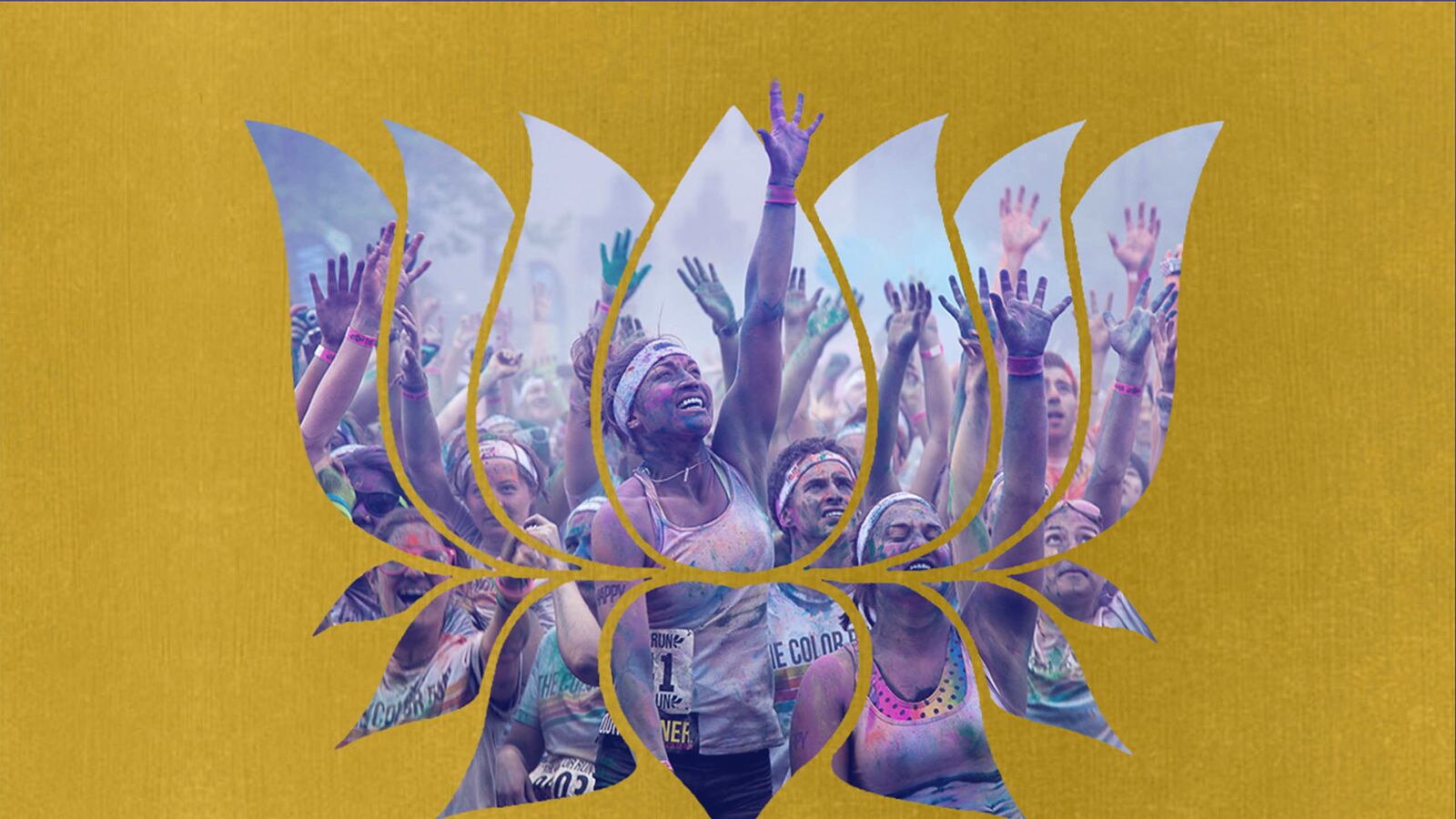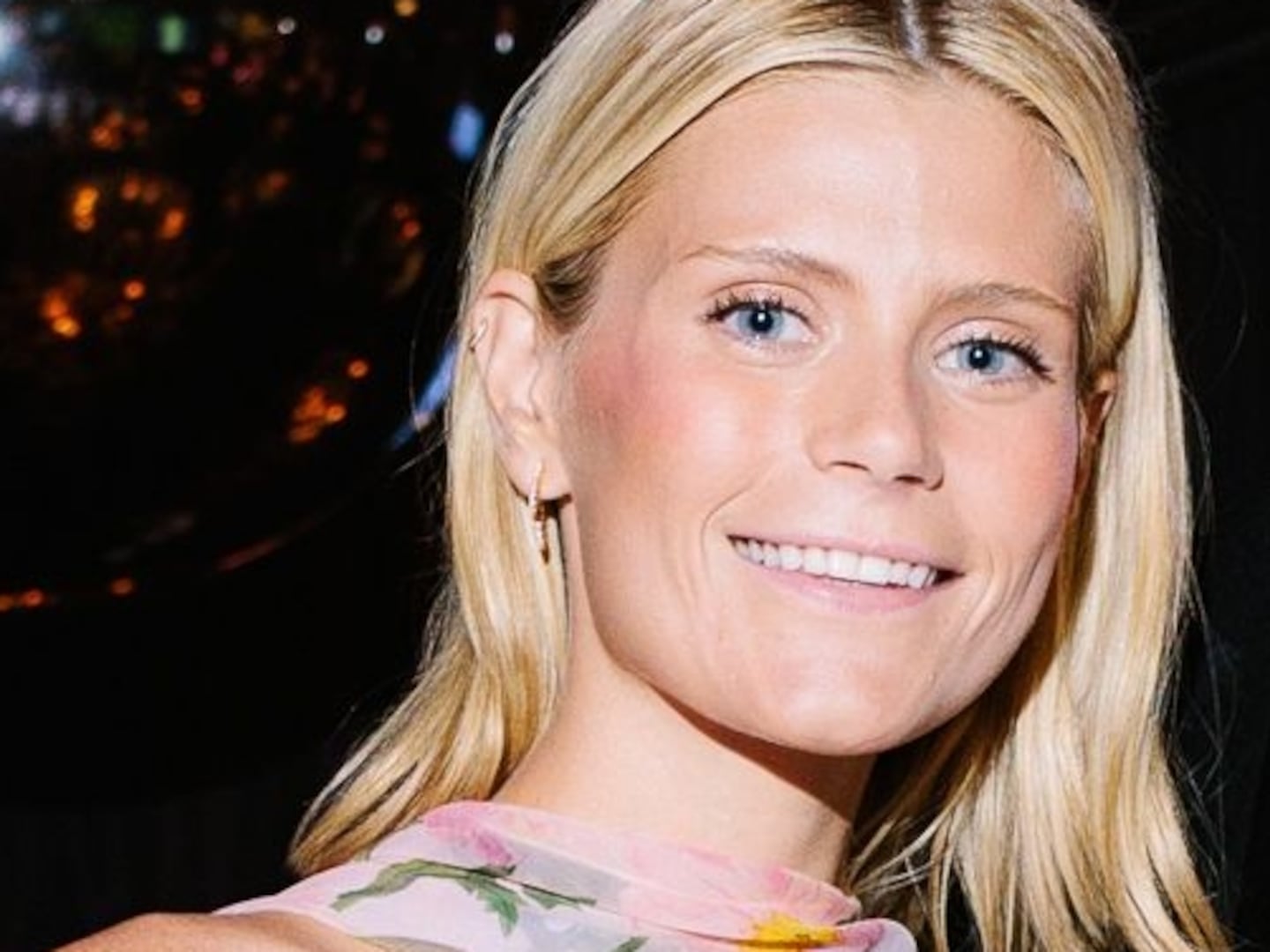
In our Curious World series, we’ve explored fascinating intersections of science and culture alongside National Geographic Channel. Now, with The Story of God with Morgan Freeman (premiering Sunday, April 3rd, at 9/8c), National Geographic Channel tackles the biggest questions in the universe: why are we here, what does it all mean, and what can we learn from one another? This piece investigates a question that would fit right in on the show: how have different religious faiths influenced our favorite secular customs and holidays?
In my neighborhood, way up in the New England north, naked branches are one of the great visual motifs of winter. During the cold months, the leaves have fallen, and if branches are covered with anything at all, it’s those white Christmas lights—or are they “holiday lights”?—people hang to add some festivity to the frigidity. But this year, while out walking my dog one day, I noticed from a distance that some of the bare limbs had an unusual, colorful glow. As I got closer, I saw what gave them that color: necklaces of plastic beads, red and green and blue in color. Mardi Gras beads.
Please click here for a quick survey.
Of course, like many New England towns, mine has a fair share of religious Catholics. It’s not difficult to imagine some of them being upset that Mardi Gras, or “Fat Tuesday,” the day before the Catholic holiday of Ash Wednesday, has been commercialized to such an extreme—when we think of the holiday in America, we think of debauched parties in New Orleans, bare breasts, public drunkenness, and, of course, those cheap plastic beads.
But America’s ability to assimilate religious traditions into its secular culture is also one of its glories. Here, Mardi Gras isn’t just for the Catholics—just as Halloween isn’t just for the Wiccans, and the Color Run isn’t just for the Hindus (more on that later). A tolerant country, historically welcoming to immigrants (despite our current wave of anti-immigrant suspicion), possessed of a voracious appetite for new customs, our civic culture is replete with parties, holidays, and celebrations that have religious roots but now involve people of all faiths and backgrounds. Let’s look at a few examples.
Mardi Gras

The Catholic holiday “Fat Tuesday,” or Shrove Tuesday, historically marks the final day of a season of partying that begins with Three Kings Day, or the Epiphany, and ends on the night before the beginning of the Lenten season—in other words, the last night that you could eat fatty foods, and drink your fill, before a forty-day season of self-denial. The day took different forms in different lands, but in the French-influenced parts of the American South, like New Orleans and Mobile, Alabama, it became a massive multi-day festival, lead by “mystic societies” or “krewes.” The krewes organize balls and parade floats, from which their members throw gifts to revelers—including, of course, the famous Mardi Gras beads.
Although Mardi Gras is associated with New Orleans, there are similar carnival-season festivals around the Gulf of Mexico, not just in Mobile but in Tallahassee and Tampa, Florida. There’s a carnival in La Crosse, Wisconsin. There’s even a popular carnival in St. Paul, Minnesota, which is also held, according to tradition, right before the Lenten season. In St. Paul, the carnival is organized by krewes, as in New Orleans, but with a distinctly northern flavor: this year, the Saint Paul Winter Carnival featured “art shanties,” inspired by the traditional ice-fishing houses on the state’s frozen lakes. In other words, Mardi Gras, while still rooted in its Catholic origins, has spread across the United States, and wherever it goes, it takes on a local flavor.
The Color Run

The ancient Hindu religious festival known as Holi is marked by bonfires, public revelry and, well, lots of colors—often in the form of colored powder, thrown gleefully at participants who then proudly wear the rainbow spread—began in India and then spread throughout South Asia. It occurs near the vernal equinox, typically in March, and can last from two to sixteen days. But nowhere in India was it ever marked by a five-kilometer road race. Yet that’s what it’s become here in the United States, where it has morphed into that familiar sight from Facebook photos, one ubiquitous in our fitness-obsessed culture: a 5k race, in this case known as “the Color Run.”
In 2011, an American entrepreneur named Travis Snyder organized a race in Utah in which runners were showered with colored powder, made of corn starch, at various stations; he has since founded Color Run LLC, which organizes color runs all over the United States, as well as in Australia, Great Britain, and China. Millions of people have now run in versions of the race. In each location, the Color Run partners with a local charity to raise money—although money always goes back to Snyder’s company, which is for-profit. Although some have criticized Snyder for cultural appropriation, the feel-good appeal of Color Runs, where hundreds, even thousands, crash through the finish line sweaty, smiling, and tagged with every color of the rainbow, is unlikely to lose its appeal.
Mindfulness meditation

You’ve likely heard of “mindfulness” meditation, in which one pays close attention to areas we’re used to running on autopilot—one’s breathing, one’s emotions, one’s body—in the hope of finding inner peace. Elementary schools use versions of it to help calm children; it’s commonly taught to medical patients to help them deal with anxiety around their illnesses; and corporations look to it to help make their employees happier and more productive. But mindfulness has its origins in Buddhism, especially the vipassana school, in which it is supposed to give its practitioners awareness of the impermanence of the world, as well as the illusionary nature of the self.
The mainstreaming of mindfulness in America, which now often incorporates aspects of Indian yoga, can be traced to a number of practitioners in the 1970s, like the medical doctor Jon Kabat-Zinn, who developed what he called mindfulness-based stress reduction (MBSR) at the University of Massachusetts. He was one of many Jewish students of Buddhism—the famous “JuBus”—who helped popularize Buddhist practices in the contemporary West. Like many of the other early mindfulness teachers, he was very interested in spirituality, and in preserving Buddhist and yogic roots. But the mindfulness movement got away from them, and today it’s used by corporations from General Mills to Aetna, from Target to Goldman Sachs—not to mention the United States military.
Valentine’s Day

Valentine’s Day has become so secular that few of us even call it by its original name, Saint Valentine’s Day. The holiday began as the Catholic feast day of two saints named Valentine, including one who, according to (probably apocryphal) legend, performed weddings for Roman soldiers forbidden to marry. St. Valentine’s association with romantic love was not forged in the popular consciousness until at least the 14th century, when the poet Chaucer wrote a line about birds’ choosing their mates on Valentine’s Day—but he made no reference to February 14. The following century, people began writing what they called “valentines” to their loved ones. It was not until 18th century England that the tradition began of wooing one’s beloved with candies.
Of course, in contemporary America, any association of Valentine’s Day with the original saints has been further obliterated by all the other customs that have attached themselves to the day: the hearts, the image of Cupid shooting his arrows, the Hallmark cards and Whitman’s samplers. Never a very important day to Christians, the holiday has become far more important to secular—and besotted—Americans.
The Wedding Canopy

Getting married under a canopy is a millennia-old tradition among Jews, who call that canopy a chuppah. The chuppah is mentioned in the Psalms, and since biblical times the chuppah, which is made of four poles holding up a cloth cover, accrued more mystical aspects. Some believe, for instance, that the chuppah should be erected outdoors, so that the bride and groom’s ancestors can look down from heaven. In the Talmud, the fifth- and- sixth-century collection of Jewish legal writings, it’s suggested that when a boy is born, a cedar should be planted, and when a girl is born, a pine—and when they marry, their chuppah is built from the wood of those trees.
Please click here for a quick survey.
But the use of a wedding canopy has spread widely among non-Jews, especially in the United States. One now finds wedding canopies with flowers interlaced with the structure, or special lighting—or even both, as the existence of this orchid-and-LED-lighting chuppah demonstrates. And who can forget the very non-Jewish Owen Wilson character carving an ornate chuppah, by hand, from a solid block of wood, for his very non-Jewish friends in the classic comedy Meet the Parents. And what’s more American than that? As one scholar told The New York Times, discussing the use of chuppahs by non-Jews, “You can’t take a symbol and sanctify it just because it’s a custom. This is a free society.” In other words, you can’t put such a custom “off limits” to anybody, which is an excellent way to think about all religiously influenced customs in the United States. They often stray far from their origins, so far that we forget where we came from. Depending on your own faith or religious beliefs, you might see that as the price, or the glory, of a free society.
"The Story of God with Morgan Freeman" premieres Sunday, April 3, at 9/8c on the National Geographic Channel.







